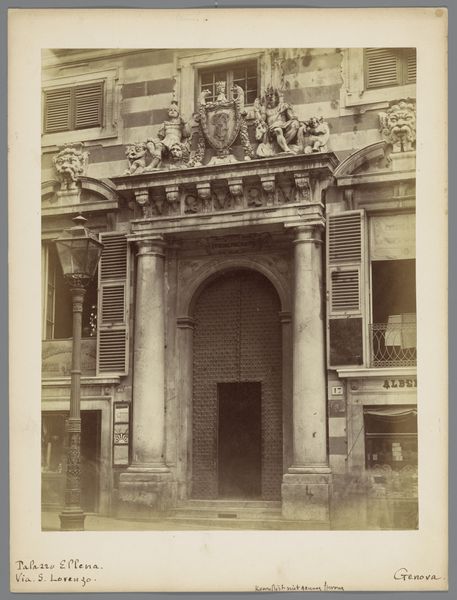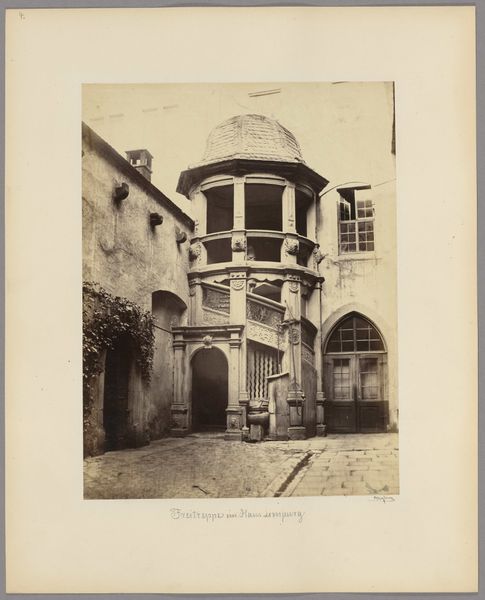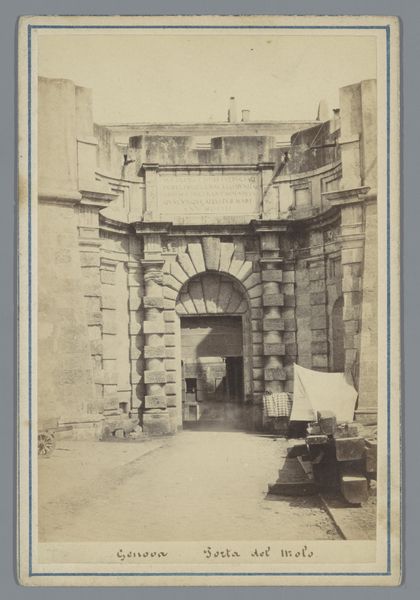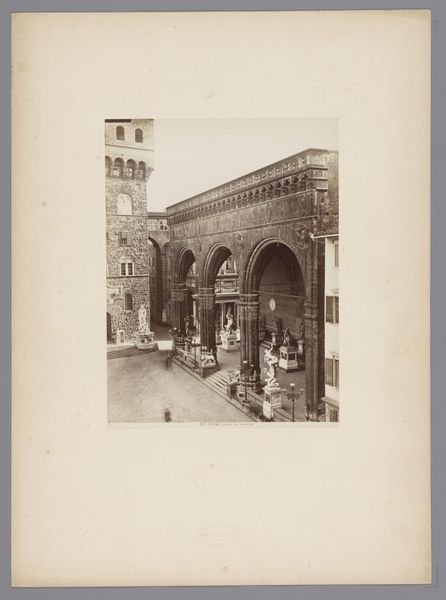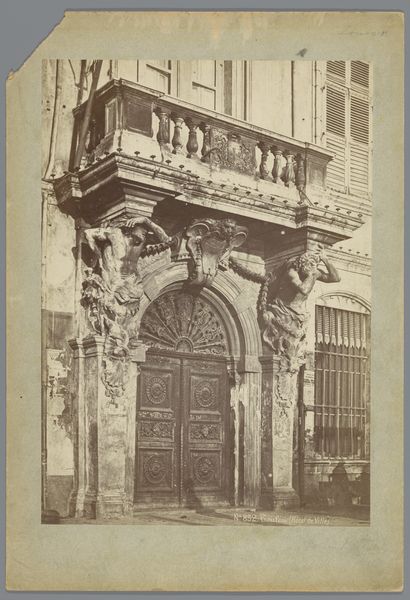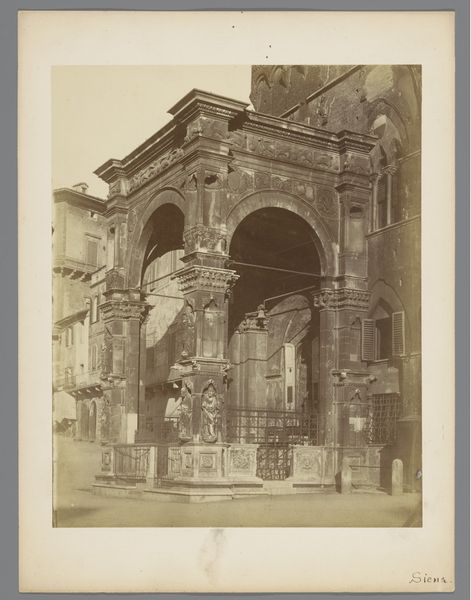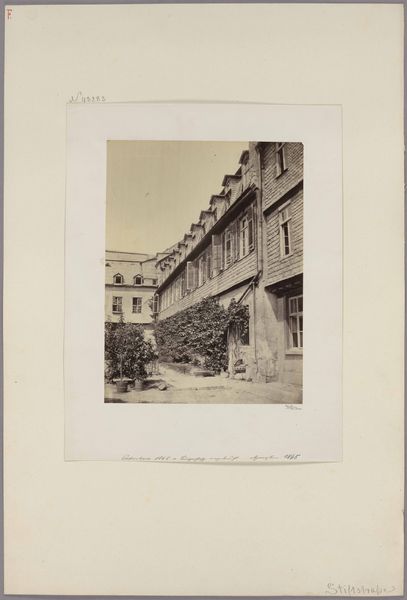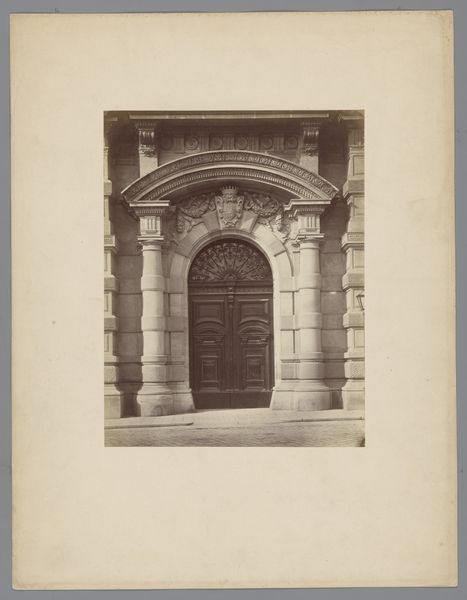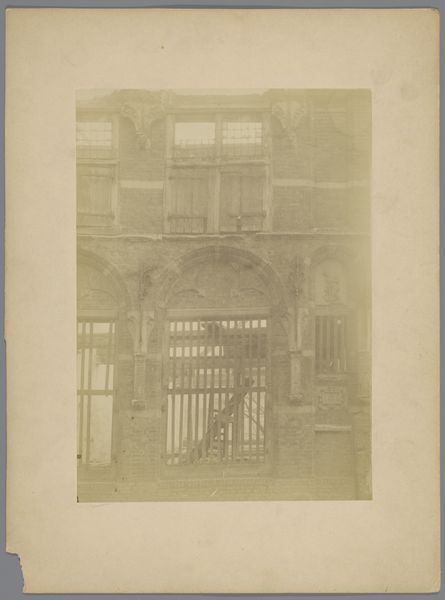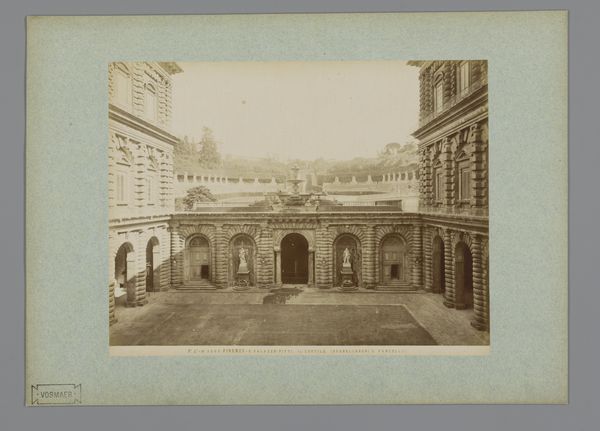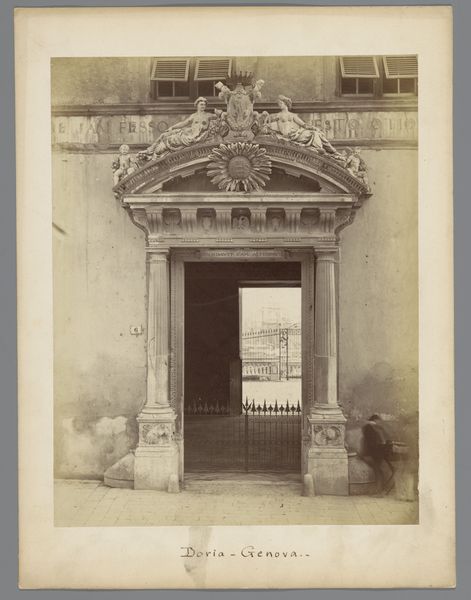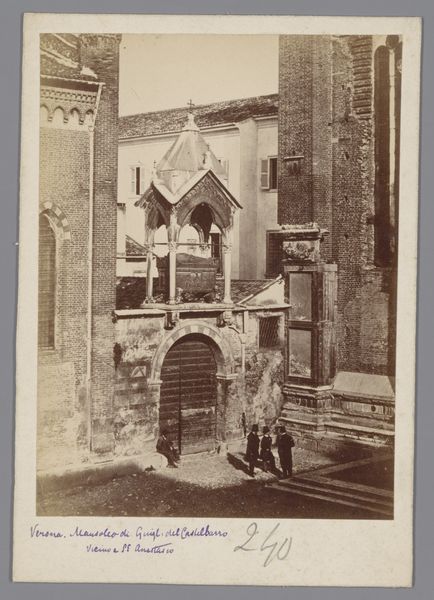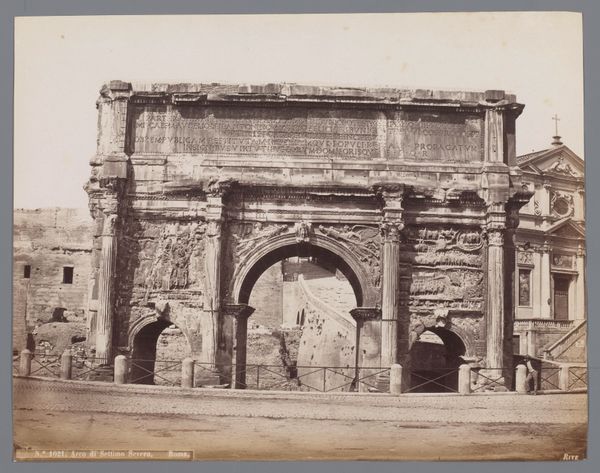
Dimensions: height 255 mm, width 197 mm, height 374 mm, width 276 mm
Copyright: Rijks Museum: Open Domain
Editor: Here we have "Zittende mensen voor de Porticus van Octavia in Rome", a gelatin silver print taken sometime between 1860 and 1889 by Roberto Rive. I'm struck by the contrast between the grandeur of the Roman architecture and the ordinary people sitting at its base. What are your thoughts on the photograph? Curator: It's a compelling juxtaposition, isn't it? The Porticus of Octavia, once a symbol of imperial power, is now a backdrop for everyday life. Rive’s image captures a key tension in how we understand history. Is it about the grand monuments or the lives lived around them? And how does photography, as a relatively new medium at the time, contribute to this tension? Does it democratize history by recording these "ordinary" moments? Editor: That's a great point about democratizing history. The figures seem so relaxed, almost indifferent to the historical weight of the Porticus behind them. Was Rive trying to make a statement about the decline of the Roman Empire, perhaps? Curator: It's tempting to read a sense of decline, given the ruins. But remember, the "decline" of Rome is a narrative constructed and reconstructed over centuries. I think Rive is more interested in presenting a specific moment in Rome’s ongoing life, in showing how ancient structures are constantly re-inhabited and re-interpreted by successive generations. What purpose does this photo serve? Souvenir? Documentary? A way to show off that Rome lives? Editor: So, it's not so much about a fixed meaning as it is about the evolving relationship between the past and the present? That's something to consider. It is a picture for an Italian dude about how the grandeur has become common-place. Curator: Exactly. And consider how the rise of mass tourism in the 19th century further complicated that relationship. People came to Rome seeking the past, but what they often found was a city very much alive. How does the photograph participate in marketing this vision of a lived history to mostly wealthy patrons? Editor: So, Rive’s photograph captures a moment of that negotiation between expectation and reality. It gives pause. I initially focused on the juxtaposition in the frame, but I better understand what forces made this possible. Thank you. Curator: I agree. We are both enriched from understanding more about the social function that art and architecture takes in our daily lives, both past and present.
Comments
No comments
Be the first to comment and join the conversation on the ultimate creative platform.
